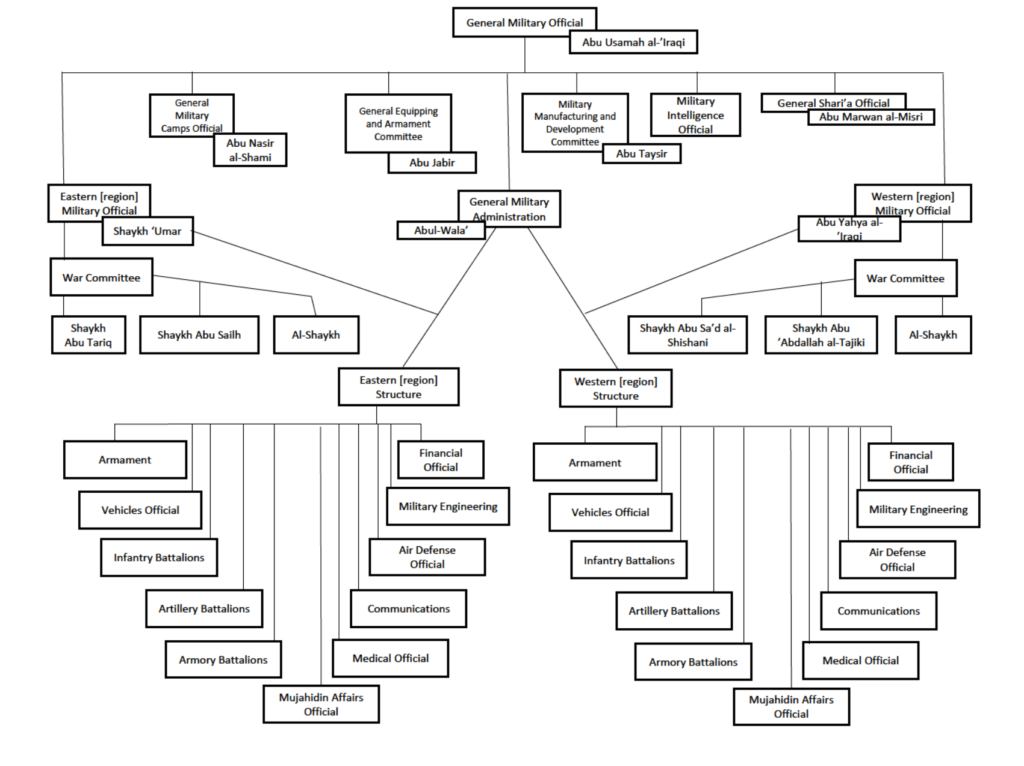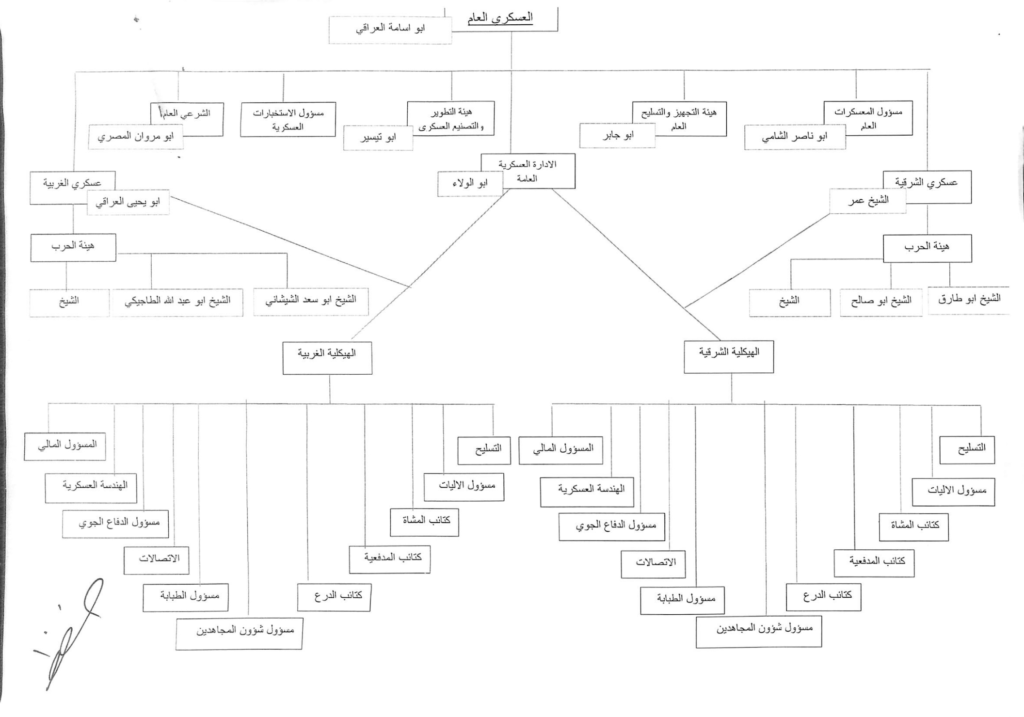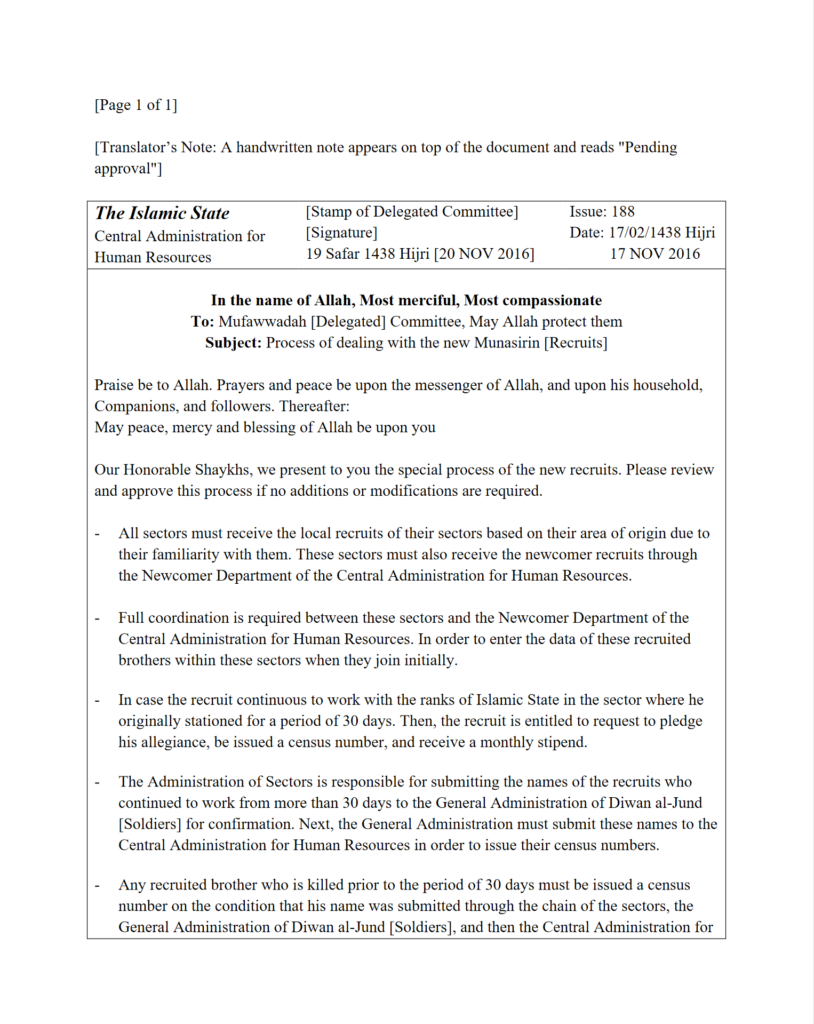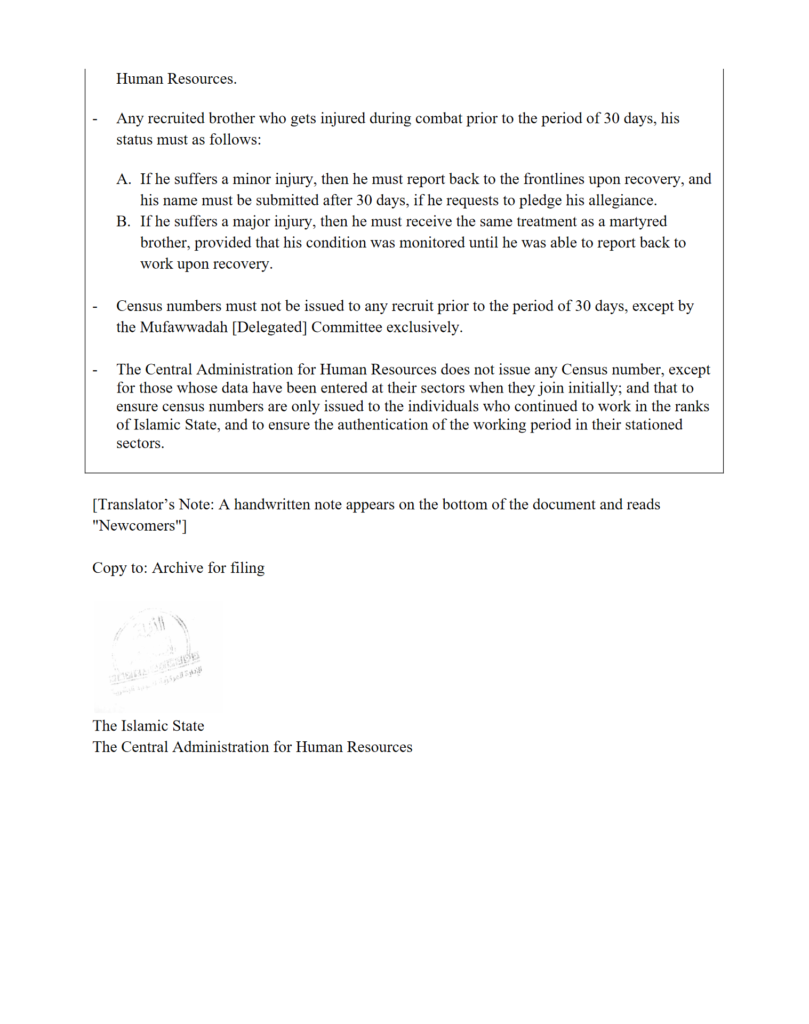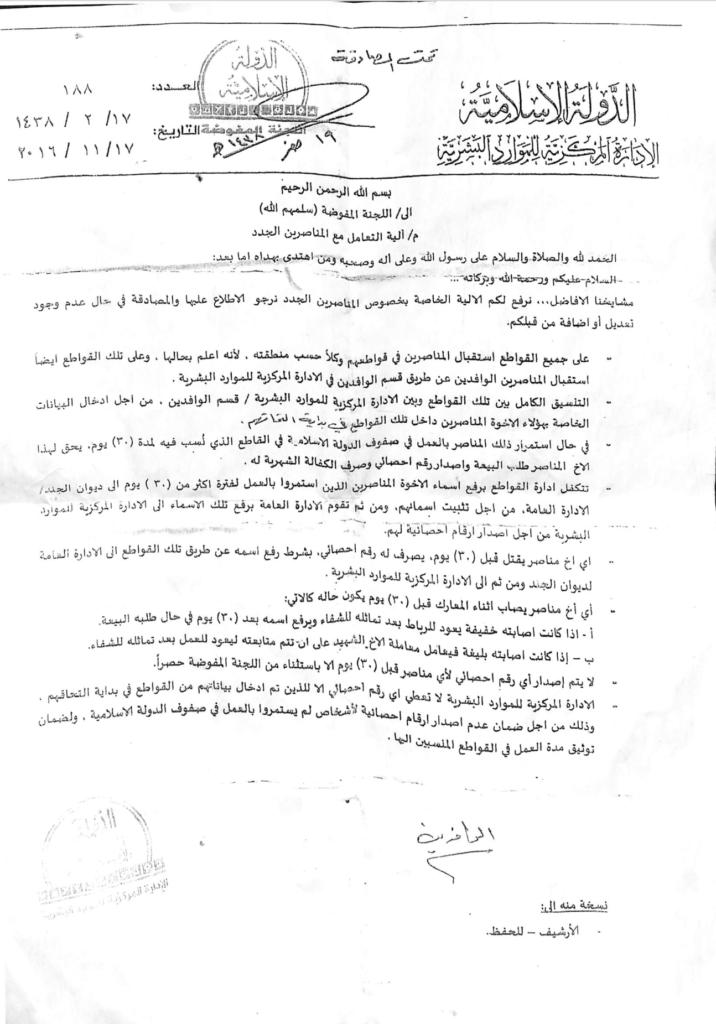When the group known as the Islamic State declared its caliphate in June 2014, it did so with a promise that it was not just an organization engaged in fighting, but in governing as well. As a result, the group’s pursuit of “stateness” required an investment in more than just battlefield advances. It also had to demonstrate a capability to create institutions that ostensibly served the dual purposes of imposing its interpretation of order on people while also improving the lives of its citizens.
While much has been written about the various bureaucratic agencies and institutions created by the Islamic State during the highwater mark of its tenure in Iraq and Syria, still relatively little is known about the size and scope of those institutions, or the personnel power needed to sustain them. Through analysis of a small number of key primary source documents, this report offers a glimpse at both facets, demonstrating that the Islamic State created intricate organizational structures to support its governance efforts, but also that the group’s funding supported tens of thousands of individuals and their families in Iraq.
Although it has lost much of its territorial holdings in Iraq and Syria, the Islamic State has continued to show interest in governance there and in its affiliate provinces around the world, making the information contained in this report an important baseline against which to compare the group’s ongoing efforts.


